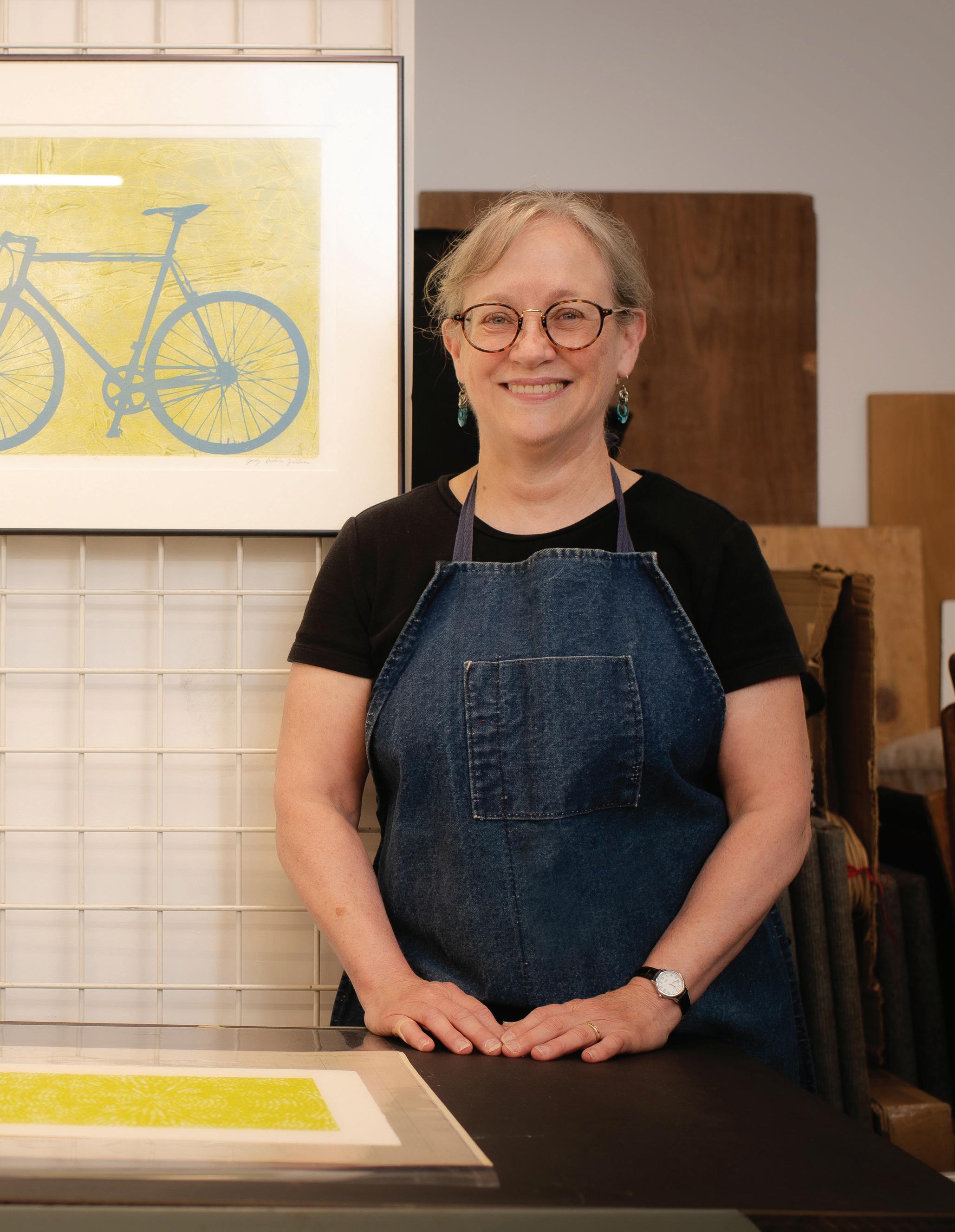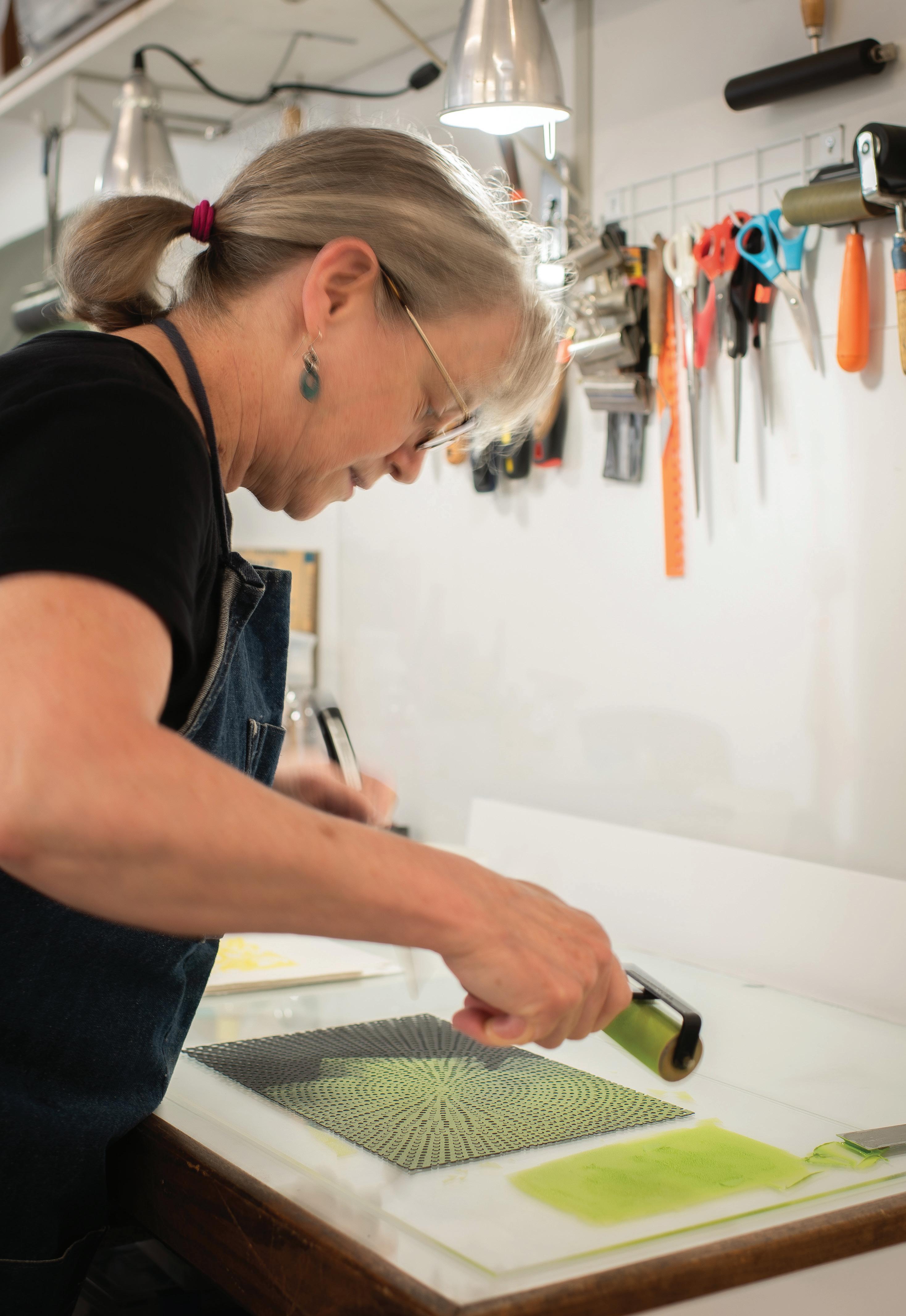
4 minute read
Pursuing Knowledge and serving others
by Chris Brennemann, PhD
MY HUSBAND AND I BOTH ATTENDED SMALLER LIBERAL ARTS COLLEGES. WE REALLY CAME TO VALUE AND APPRECIATE THAT LEARNING ENVIRONMENT AND THE OPPORTUNITY FOR PERSONAL GROWTH IT PROVIDES. WE ARE PRIVILEGED TO CONTINUE OUR SUPPORT OF QU AND THE LIBERAL ARTS MISSION.
- JUDY (HINKES) ZEDDIES ‘83
Judy Zeddies ‘83 is the director of Printmaking and Book Arts at Lillstreet Art Center in Chicago, an art school, art gallery, and artist studio space that accommodates artists working in a wide variety of media.
Judy received a Bachelor of Fine Arts from Quincy University and a Master of Fine Arts in Printmaking & Drawing from Northern Illinois University. She has also studied printmaking at Chicago Printmakers Collaborative and at Ox-Bow School of Art in Saugatuck, MI.
Judy is grateful for the variety of positions she’s held and for the managerial and maintenance skills she has gained from her college classes and throughout her professional experience. As director of Printmaking and Book Arts at Lillstreet Art Center, Judy hires teachers, plans the schedule, orders supplies and makes sure the studio runs as smoothly as possible. She teaches classes including letterpress, relief, screen-printing and monotype printmaking. Judy also serves as a mentor for her department’s artist-in-residence at Lillstreet.
Judy’s journey to Quincy started with a weekend campus tour. As a Chicago native, she also visited the campuses of some larger colleges, but the more intimate size of Quincy College seemed a better fit for her.
Judy also notes that QC’s academic scholarships were key factors in choosing Quincy. She and her twin sister were first generation college students, and their widowed mother had few financial resources to offset college expenses.
Judy has great respect for the instruction and mentorship she received at QC and specifically through the art department. She says that while her fellow art majors enhanced her educational and social enjoyment, her favorite professor, Robert Lee (Bob) Mejer, truly stood out. She recalls several key experiences that Bob afforded to art majors including organizing groups to go to Des Moines for a biennial printmaking symposium, which gave all students a taste of larger printmaking possibilities.
As a senior, Judy sought Bob Mejer’s advice as she applied to graduate schools and was accepted at Northern Illinois University in ceramics. She was more interested in printmaking, but Bob advised that her portfolio was stronger in ceramics. Judy applied with the understanding that, once she was accepted, she could get to know the print professors and change to that concentration. “Our plan worked perfectly, and I received my MFA in spring of 1986.”
Judy initially sought her MFA hoping to teach at the college level like Bob Mejer, and although Judy does not hold a traditional college instructor position, she adds, “I trust I am putting in the extra effort for my students at Lillstreet the same way Bob does for his students.”
In addition to her education providing a strong foundation in her art practice, Judy says that she also learned to work independently and strive for goals that seemed a bit out of reach at that time. For example, she learned the basics of using power tools in her art classes and has continued to build on those skills and the use of media types in her artwork.
“I am thankful that I am a lifelong learner.”

Judy’s consistent commitment to the pursuit of knowledge and to servant leadership is in direct keeping with the Franciscan values that are the foundation of Quincy University. She says these values have guided her life and career paths.

One defining moment for Judy, personally and professionally, was entering an art piece into the Quincy Art Center regional art competition her senior year and having that piece win a prize and be purchased. Since then, she has been accepted into hundreds of juried exhibitions and art fairs and sold thousands of works, but in her words...
Judy and Michael Zeddies value giving back to their communities and good causes as a way to share some of their time and funds with not-for-profits that are doing important work for society and the environment. They often choose organizations that have an educational component.




